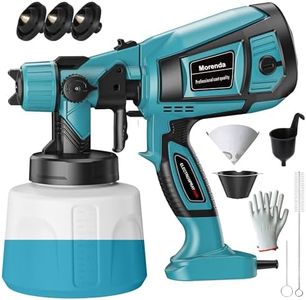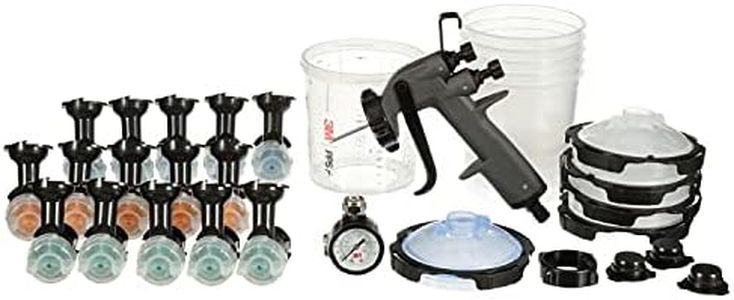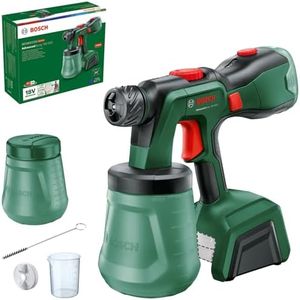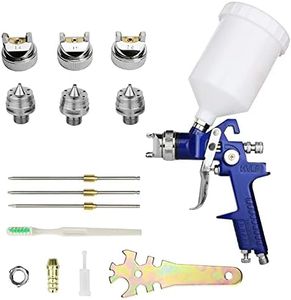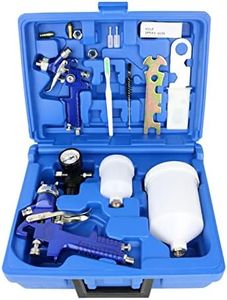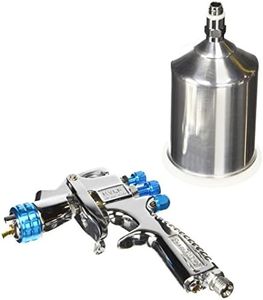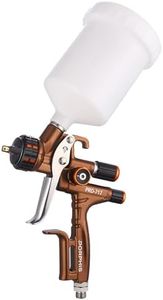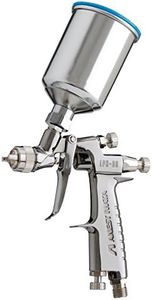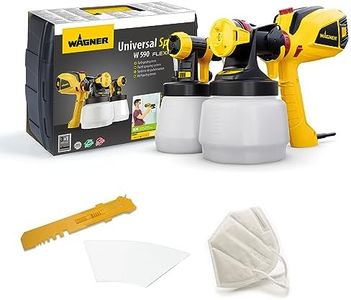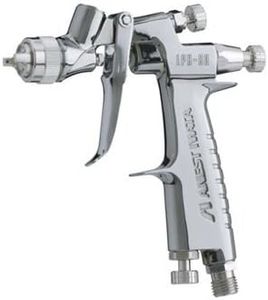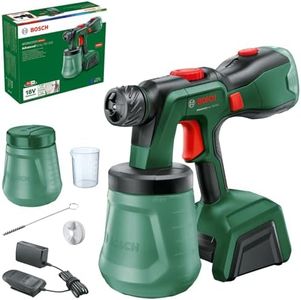We Use CookiesWe use cookies to enhance the security, performance,
functionality and for analytical and promotional activities. By continuing to browse this site you
are agreeing to our privacy policy
10 Best Gravity Paint Spray Gun
From leading brands and best sellers available on the web.Buying Guide for the Best Gravity Paint Spray Gun
Choosing a gravity paint spray gun can seem overwhelming if you are new to DIY or professional painting. The right tool can make painting surfaces faster, more even, and less messy than traditional brushes and rollers. To find the best fit for you, it's important to understand some basic specifications and what they mean for your needs, whether you're working on cars, furniture, walls, or crafts.Nozzle SizeNozzle size refers to the diameter of the opening where paint sprays out, affecting how much paint and how finely it is atomized. It's important because it determines what kind of paint you can use and how detailed or broad your coverage will be. Smaller nozzles (about 1.0-1.2mm) are best for thinner materials like stains or for detailed work, while medium sizes (1.3-1.4mm) are versatile for base coats or general projects. Large nozzles (1.7mm or above) are for thicker materials like primers or latex paint. Choose based on the type of paint you'll mostly use and the level of detail in your projects.
Cup (Paint Reservoir) CapacityThe cup capacity is how much paint the spray gun can hold at once, usually measured in milliliters or ounces. This matters for efficiency—smaller cups (around 125-250ml) are lighter and easier to maneuver for short, detailed projects, while larger cups (500ml and up) allow you to paint larger surfaces without refilling as often. Think about the size of your typical project to decide on a comfortable capacity: small for touch-ups or crafts, medium for furniture, and large for walls or cars.
Air Pressure RequirementThis specification tells you how much air pressure, typically in PSI (pounds per square inch), is needed from your air compressor. Lower pressure guns (around 10-20 PSI, often called HVLP—High Volume Low Pressure) offer more control and less overspray, making them ideal for detailed or indoor work. Higher pressure guns (above 30 PSI) can spray thicker paints faster, good for large areas but can create more mess. Match the air pressure to what your air compressor can produce, and consider where you'll be working and what results you want.
Material CompatibilitySome guns are designed to handle only specific types of paint or finishes, such as lacquers, enamels, latex, or stains. It's important because using a gun that's not compatible with your chosen material can cause clogs or poor results. Generally, check what types of coatings you'll use most often—if you plan to use a range, look for a versatile gun or one with interchangeable nozzles.
Adjustability (Spray Pattern and Flow Control)Most good gravity spray guns let you adjust the fan shape (wide or narrow) and paint flow (how much paint comes out). These adjustments are important because they allow you to tailor the spray to the size and shape of your project, improving your results and reducing mess. If you often switch between small items and large surfaces, look for a gun with easy, responsive controls.
Weight and ErgonomicsThe weight and design of the spray gun can affect how long you can comfortably use it, especially for big projects. Lightweight, well-balanced guns reduce fatigue and are easier to control, which is important for beginners or those with long or frequent tasks. Hold and test the gun, if possible, to ensure it feels right in your hand for your intended use.
